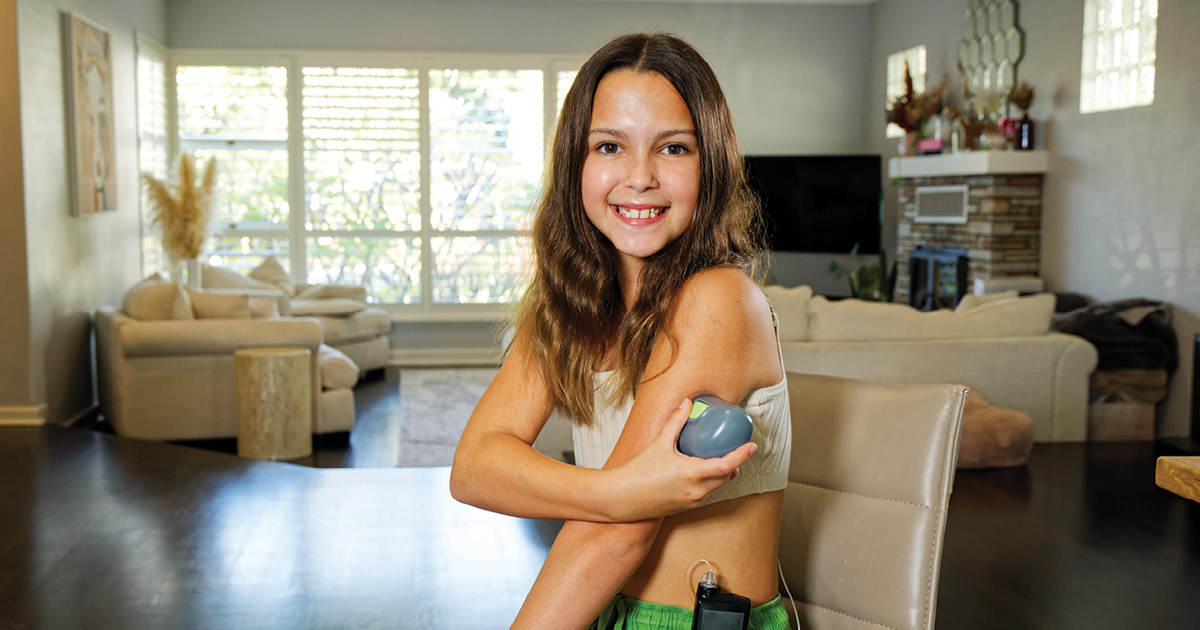Imagine living with a condition that requires you to make approximately 180 health- related decisions every day for the rest of your life.
This is the reality for children living with type 1 diabetes (T1D) – an autoimmune condition that destroys the ability of the pancreas to produce insulin, without which the body cannot utilise glucose, a simple sugar that comes from the food we eat and is needed for energy.
One of the thousands of Australian children living with T1D is 11-year-old Meela Goldsworthy, who was diagnosed at the age of four. Like all children with T1D, Meela needs regular injections or a pump for insulin and her glucose levels need to be closely monitored to maintain them within in a safe range. Every day Meela and her family must carefully manage her diabetes to reduce her risk of both short- and long-term complications.
Living with T1D is exhausting and unrelenting and can be life-threatening. But a groundbreaking new project, led by Professor Tim Jones and Helen Clapin at the Rio Tinto Children’s Diabetes Centre at The Kids Research Institute Australia, is providing hope for families like the Goldsworthys.
DiabHQ is an innovative new platform that integrates diabetes data from a range of different sources so it can be used more effectively to accelerate research and translation, improve clinical care, and help patients and families with self- management.
With the DiabHQ data layer complete, the next focus is a Patient Portal that will provide patients and families with a one- stop shop for their diabetes needs.
Meela’s mum Lisa Goldsworthy, who has been involved in the project since its inception, is excited about DiabHQ and its potential to relieve the fatigue, stress and frustration associated with T1D, allowing children and their families more time to live a normal life.
“DiabHQ will allow us to connect with clinicians and researchers and to share the needs of our community,” she said.
The Patient Portal will allow us to do almost everything we need in one place - we’ll be able to access resources and support, track Meela’s progress, and view upcoming appointments and events.
“Easing the burden for children living with T1D and their families will improve mental health, physical health and quality of life.”
Next steps
- The Patient Portal is on track for implementation at Perth Children’s Hospital by early 2025
- DiabHQ is being designed so that it can be scaled to other diabetes centres across Australia in the future

